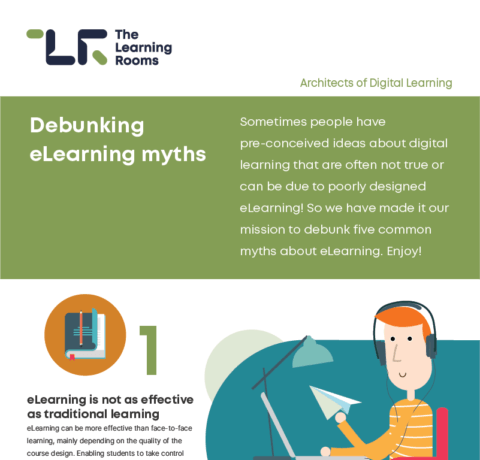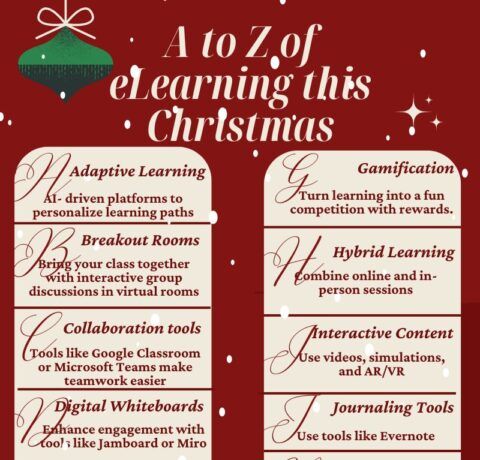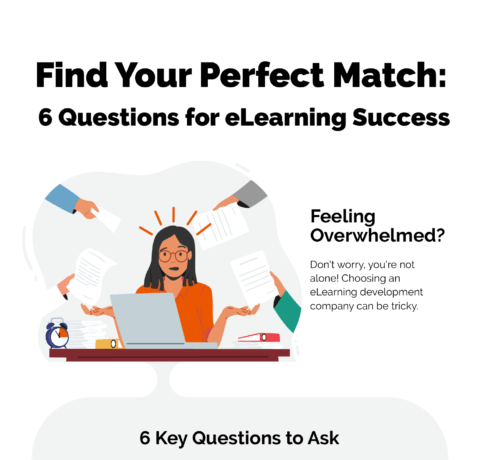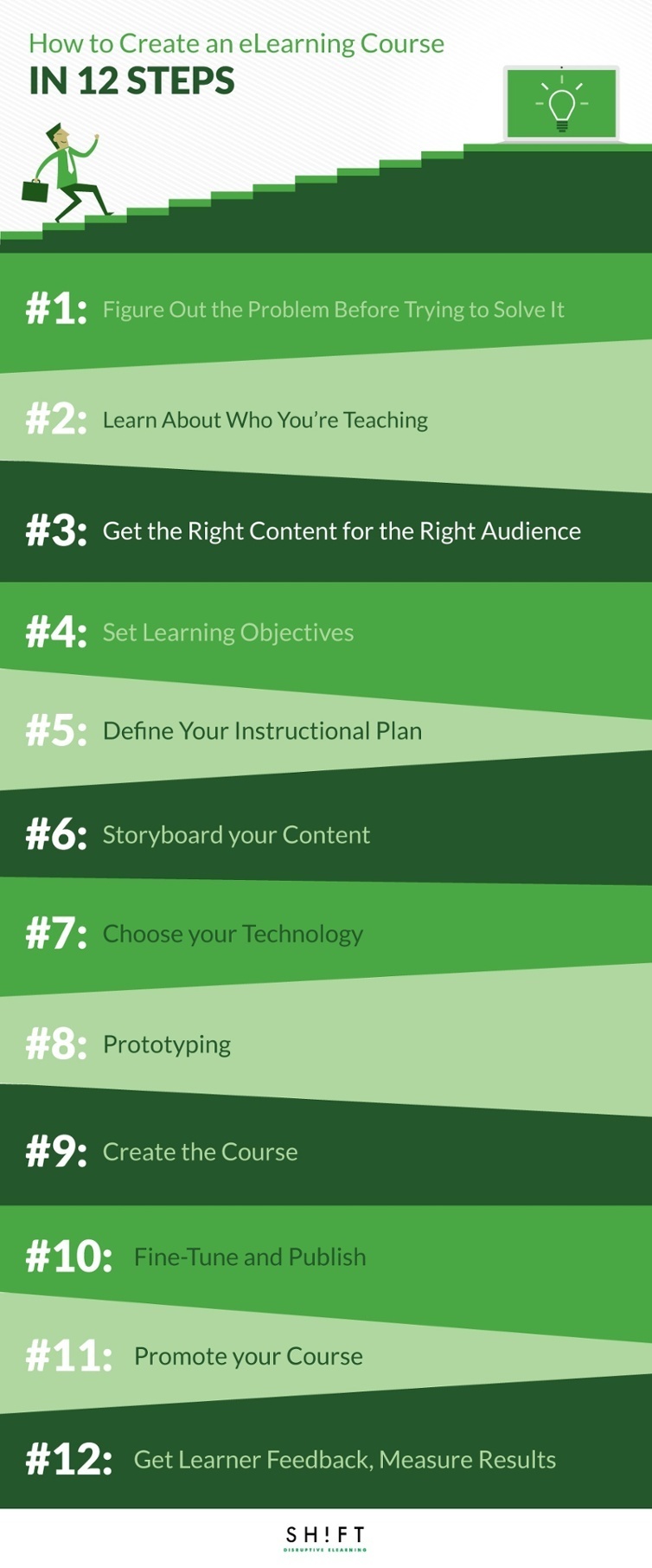Create an eLearning Course in 12 Steps Infographic
Looking at all the things that are involved in creating an eLearning course could make you feel like your first step should be to “Give Up.” However, with these 12 steps, we break down the process into manageable chunks, which is a big part of what makes for good eLearning course design. Not so bad, right? Read through the Create an eLearning Course in 12 Steps Infographic, and soon you’ll have a good handle on what is needed and where to start to create your first eLearning courses.
1. Start with Why: Do a Need Analysis
Conducting a needs analysis. The results of this analysis become your plan for design and what you hope to get your learners to achieve because now you know what they actually need, versus just guessing or assuming. It will also show gaps in current training and how you can close the breach and get results.
2. Know your Audience
If a business has low interest in their training programs from employees, it is often the case that the courses are too difficult or too easy or completely irrelevant to the employees’ jobs. By knowing your audience first and learning what they already know and need to know you can create better, more useful content.
3. Content Analysis: Get the Right Content for the Right Audience
Once you’ve determined why training is needed and who your audience is, it’s time to analyze your content. It won’t matter how good your course is designed if the content your sharing doesn’t have value for your audience. This is why this step is so important.
4. Set Learning Objectives
During this step we, as designers, have the job of asking questions and considering both the desirable and undesirable results of the course. Then we write our objectives based on the final desired results. Start by picking 3-4 objectives. Now make sure your content doesn’t wander too far away from these objectives.
5. Define Your Instructional Design Plan
Now is the time to decide on your instructional strategy. This strategy is the process or approach by which your course is going to be developed to engage learners. There are a variety of approaches eLearning designers can take including storytelling, discovery learning, situational learning and several others.
6. Storyboard your Content
A storyboard is a rough, visual outline that helps map out how text, pictures, and other elements will look on a page. This will help you see how your page will look before you waste time putting together the final design only to find out the elements don’t fit together right.
7. Choose your Technology
When determining what authoring tools and learning management systems you should use, look at reviews from other designers, available features, cost and what is best for your organization. There is not one tool that works for everybody. Needs vary from one company to another.
8. Prototyping
A prototype defines the representative look-and-feel and functionality of the entire course. It also is used to test out technical functionality. This allows eLearning designers to create and discard multiple versions quickly to get the best fit before wasting too many resources on designing the whole course then finding out something doesn’t work.
9. Create the Course
Once you have your prototype approved, it’s time to start designing the actual course. During this process you need to keep an eye on the original objectives and problems to ensure the course, as a whole, is geared towards solving these. You also need to determine an instructional design method that meets the needs of learners.
10. Fine Tune and Publish!
Take feedback and comments from your team (and clients), make corrections as needed, then publish!
11. Promote your Course
Promotion should be part of your development plan, and your very first slide should engage your audience from the start. Creating an internal promotion plan will save you the heartache of creating an awesome course only to find out nobody is taking it.
12. Ensure you can measure and evaluate results
Determine how effective your course has been by asking your learners. This will help you figure out what you did right and what you can improve on in the future. To determine if this has been achieved, many use Kirkpatrick’s Four Levels of Evaluation.







You can adjust your cookie preferences here.